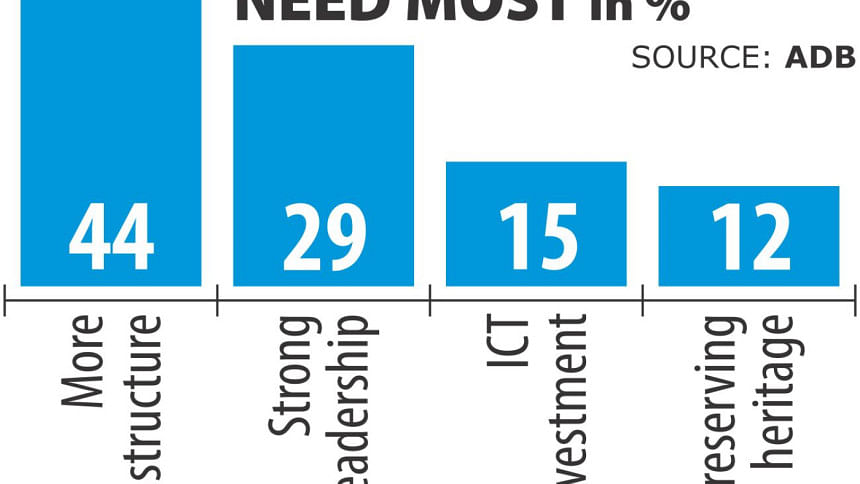Asian cities should invest more in infrastructure, ICT: ADB poll

Investment in infrastructure, strong leadership, preservation of urban cultural heritage, and higher spending on ICT projects are crucial for Asia's secondary cities to become 'smart', according to a blog poll by Asian Development Bank.
In its October blog poll, the ADB asked its readers what Asia's secondary cities need most to become 'smart' cities, where public service delivery is efficient and all citizens benefit economically and socially from common assets like green space or cultural heritage.
Some 44 percent of the respondents said investing in infrastructure should be a priority.
A secondary city generally falls into one of three types: Sub-national urban centres of administration, manufacturing, agriculture or resource development; metropolitan clustered secondary cities, which develop on the periphery of metropolitan or urban regions and take the form of new towns, spillover growth centres and linear cities; and corridor secondary cities, which develop as growth poles along major transportation corridors.
Normally, most secondary cities have populations ranging between 100,000 and 5 million, according to the Cities Alliance, a Brussels-based global partnership for poverty reduction and the promotion of cities in sustainable development.
According to the UN Human Settlements Programme, as of 2015 about 47 percent of the Asia's urban residents live in secondary cities, with a population of less than 500,000. Asia's infrastructure development needs are growing faster, and inequality and vulnerability are rising as the infrastructure investment gap widens.
Relative improvements in housing and access to electricity, water and sanitation for the poor have been overshadowed by absolute increases in the number of people living in slums.
"We need to address this problem in a complete way to make our cities -- especially the secondary ones -- not just smart, but more liveable," according to an article published on the ADB website.
Cities have traditionally faced trouble accessing crucial financing for infrastructure. Asia's secondary cities, or indeed major cities, committed to modernising their infrastructure should consider joining the International Infrastructure Support System (IISS).
The IISS, an online platform originally developed by the ADB and the Sustainable Infrastructure Foundation, uses templates to ensure government officials provide the necessary technical and preparatory information that financiers need to assess both public and private projects.
For 29 percent of the participants in the survey, Asia's secondary cities need strong leadership to attain the smart city status.
"The role of mayors is crucial, as they both represent the people and—as urban residents themselves—experience the same needs and are concerned about the same issues," said the article.
"When mayors work closely with citizens and businesses, they have the potential to make cities more liveable, smart, and sustainable."
Preserving urban cultural heritage and leveraging it to create economic and social benefits is the key to joining the smart cities' race, according to 12 percent of the respondents. Cultural heritage preservation can become part of a city's economic development strategy.
Finally, 15 percent of ADB blog readers chose ICT investment as the essential factor for Asia's secondary cities to become smart.
The poll ran throughout October to mark World Cities Day on October 31.

 For all latest news, follow The Daily Star's Google News channel.
For all latest news, follow The Daily Star's Google News channel. 



Comments